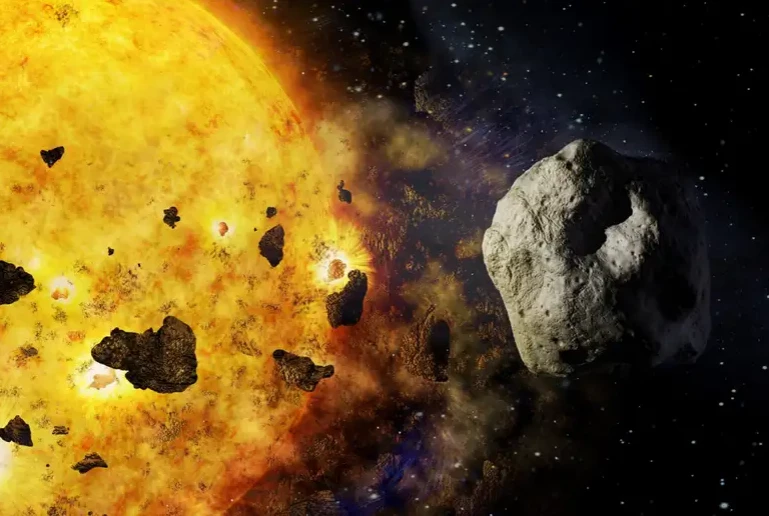Astronomers discovered a strange asteroid that was closer to the Sun than any other
The COVID-19 pandemic has left people less extroverted and agreeable / Dogs can detect stress levels from our breath and sweat
Astronomers have found the closest asteroid to the sun ever seen, a relatively large rock that gets within 20 million kilometres of it – about 13 per cent the distance between the sun and Earth. They have also spotted two other strange asteroids as part of a hunt for the rare rocks that orbit closer to the sun than Earth.
These asteroids are hard to find because in order to look for them, astronomers have to point telescopes towards the sun. That means there’s a huge amount of glare to deal with, and the brightness of the sky makes it tough to spot any but the brightest objects. Scott Sheppard at the Carnegie Institution for Science in Washington, DC and his team worked around this by observing only during the 10 minutes in the morning and evening when the sun was just below the horizon.

Artist’s impression of an asteroid near the Sun.
Using the Dark Energy Camera in Chile, they found two asteroids with orbits that are entirely within Earth’s orbit. One of them, called 2021 PH27, stays closer to the sun on its entire orbit than any other asteroid we’ve seen, and gets closer at its nearest point than any other object we know of.
“On average, it’s the second-closest object [to the sun] in the solar system, but it approaches the sun much closer than Mercury,” says Sheppard. That’s because, at its furthest point, it gets much further from the sun than Mercury does. Its surface reaches temperatures of about 500°C when it is nearest to the sun.
It will also get extremely close to Venus in the next thousand years or so, and may even collide within a few million years. That’s not the only planetary crash the researchers are predicting – another asteroid they found may someday smash into Earth.
That rock, called 2022 AP7, is most likely more than 1.5 kilometres across, making it one of the larger potentially hazardous asteroids astronomers have spotted. It’s much further from the sun than the other two objects, with its orbit stretching from inside Earth’s orbit to just beyond Jupiter’s. For now, when it crosses Earth’s orbit, it’s always on the other side of the sun from Earth, but that’s slowly changing.
“It’ll take thousands if not tens of thousands of years before it slowly works its way to where it’ll be bright in the night sky and then maybe get really close to Earth,” says Sheppard. “It won’t get near Earth anytime soon.”
As we find more of these objects, we can test our predictions about how many of them there should be overall, and therefore our understanding of the near-Earth environment and the history of the solar system.
Journal reference: The Astronomical Journal, DOI: 10.3847/1538-3881/ac8cff
End of content
Không có tin nào tiếp theo
